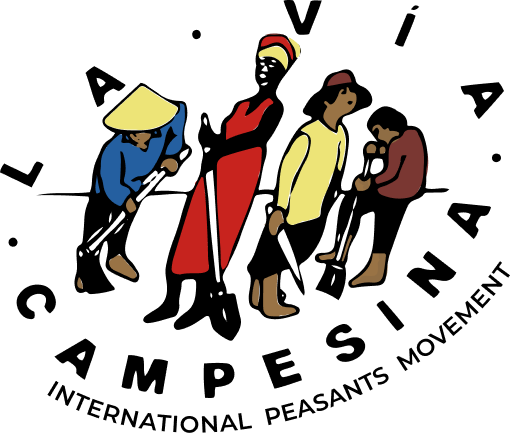- This event has passed.
Brasil, Two military leaders of Eldorado dos Carajás massacre jailed
17 April 2012
Sixteen years after the event, the two commanders of the Eldorado dos Carajas massacre, in which 19 people were killed, are finally jailed.
By Nayana Fernandez for LAB
On the 7th of May 2012, sixteen years after their crimes and ten years after their conviction, the court in Pará finally issued an order demanding the immediate detention of the two leaders of the 1996 Eldorado dos Carajás massacre: Colonel Mário Colares Pantoja and Major José Maria Pereira de Oliveira. Both were considered responsible for leading the attack against the Movimento dos Sem Terra or Landless Workers Movement (MST) members in the municipality of Eldorado dos Carajás in the south of the Brazilian Amazonia state of Pará, where 19 people were brutally killed and over 60 were seriously injured – of whom three subsequently died. Pantoja had been sentenced to 228 years and Oliveira to 158 years, but both men appealed against the verdict.
The orders were issued by Judge Edmar Pereira in Belém, Pará, at the Brazilian Supreme Federal Court because neither man has further grounds for appeal. The court order demanded that they comply with their sentence immediately.
Colonel Mário Pantoja was the officer responsible for the killings of the rural workers on the 17th of April 1996. On that fateful day, almost 1,500 MST members were occupying the state highway, claiming the land for agrarian reform. According to the Brazilian judge, they were surrounded by military officers who shot at the demonstrators from close range. Colonel Mário Pantoja was the 4th Military Police Battalion commander in Marabá and Major José Maria Oliveira was leading Parauapebas police station, both in Pará state.
On the same day the order was handed down, the 7th of May, Pantoja presented himself to the police at a detention centre in the municipality of Santa Isabel do Pará, 50km from Belém. Oliveira presented himself the following day at the Centre for Special Recuperation Anastácio das Neves, in Santa Isabel, also in Pará.
The 1996 episode shocked the international public opinion by the scale of violence employed by the Brazilian military officials. On the same 17th April, the international farmers movement La Via Campesina was holding its second international conference in Tlaxcala, Mexico and, on hearing the terrifying news, declared the date as International Day of Peasant Struggle. Since then, La Via Campesina mobilises across the globe to oppose the current attempt by some states and large international corporations to grab land from farmers; women and men who have been cultivating it for centuries.
On April 17, 1996 . . .
“They came from both sides and we were caught in the middle. We weren’t in a position to do anything against a large group of policemen armed with rifles and machine-guns!” – Avelino Germiniano, 51, survivor of the Eldorado dos Carajás massacre.
“When the buses from Marabá arrived with the police, they got off and shot a round of fire into the air. We thought that they only wanted to intimidate us. We started shouting protest slogans. We had a deaf-mute companheiro who couldn’t understand anything and he went in the direction of the police. He was the first to go down.” – Miguel Pontes da Silva, 42, survivor of the Eldorado dos Carajás massacre.
“I received a blow in the neck and I felt blood running down my back. At the time, I didn’t know if I had been hit or if I had been shot. When I made it back to the tent, my children were distraught. I put them in my arms and still had room to carry two other children who belonged to someone else. When I remember what happened that day, it feels as though I am reliving it.” – Dalgisa Dias de Sousa, 50, survivor of the Eldorado dos Carajás massacre
Even with the arrests, the crime remains unpunished
The renowned Brazilian blogger, journalist and PhhD in Political Sciences, Leonardo Sakamoto, explains in his post last 17th April why he believes the massacre still remains unpunished even after the arrests of both military officers who ordered the attack. He affirms: “One or two people might be arrested. But the conditions that made the Eldorado dos Carajás massacre possible are still here producing more victims. Again. And again. And again…”
Two decades after the attack, violence in rural areas is still high. Recent data published by Comissão Pastoral da Terra (CPT) revealed an increase of 13% in the total number of agrarian conflicts between 2010 and 2011 in Brazil. From 1,186 in 2010, last year there were 1,363 conflicts. The total number of people involved increased from 559,401 to 600,925, showing an increase of 7,4%. The list takes account of 1,035 conflicts over land, 260 related to work issues and 68 over water. The land conflicts alone show an even more shocking increase: up 24% in the number of cases and up 30.3% in the number of families involved (from 70,387 to 91,735). In the south and southeast regions of Pará alone, there are around 50 people living in constant fear of death due to rural conflicts and the state of Carajás, where Eldorado is located, could be considered the most violent region in Brazil. Between 1971 and 2007, 819 people were killed struggling for land in that state. Very few cases result in jail.

